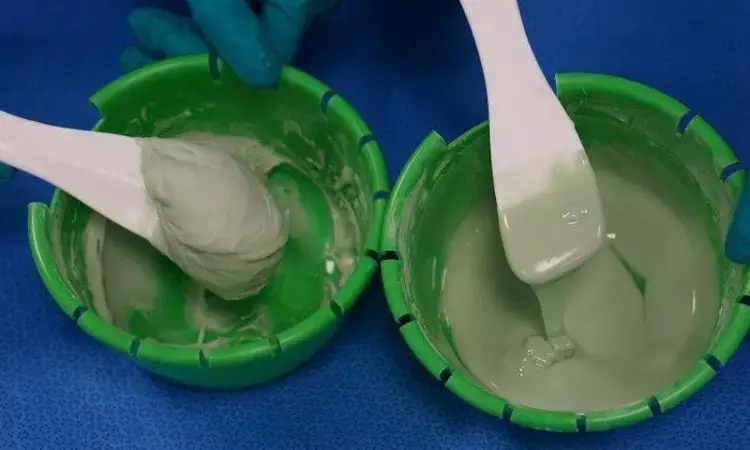- Home
- Medical news & Guidelines
- Anesthesiology
- Cardiology and CTVS
- Critical Care
- Dentistry
- Dermatology
- Diabetes and Endocrinology
- ENT
- Gastroenterology
- Medicine
- Nephrology
- Neurology
- Obstretics-Gynaecology
- Oncology
- Ophthalmology
- Orthopaedics
- Pediatrics-Neonatology
- Psychiatry
- Pulmonology
- Radiology
- Surgery
- Urology
- Laboratory Medicine
- Diet
- Nursing
- Paramedical
- Physiotherapy
- Health news
- Fact Check
- Bone Health Fact Check
- Brain Health Fact Check
- Cancer Related Fact Check
- Child Care Fact Check
- Dental and oral health fact check
- Diabetes and metabolic health fact check
- Diet and Nutrition Fact Check
- Eye and ENT Care Fact Check
- Fitness fact check
- Gut health fact check
- Heart health fact check
- Kidney health fact check
- Medical education fact check
- Men's health fact check
- Respiratory fact check
- Skin and hair care fact check
- Vaccine and Immunization fact check
- Women's health fact check
- AYUSH
- State News
- Andaman and Nicobar Islands
- Andhra Pradesh
- Arunachal Pradesh
- Assam
- Bihar
- Chandigarh
- Chattisgarh
- Dadra and Nagar Haveli
- Daman and Diu
- Delhi
- Goa
- Gujarat
- Haryana
- Himachal Pradesh
- Jammu & Kashmir
- Jharkhand
- Karnataka
- Kerala
- Ladakh
- Lakshadweep
- Madhya Pradesh
- Maharashtra
- Manipur
- Meghalaya
- Mizoram
- Nagaland
- Odisha
- Puducherry
- Punjab
- Rajasthan
- Sikkim
- Tamil Nadu
- Telangana
- Tripura
- Uttar Pradesh
- Uttrakhand
- West Bengal
- Medical Education
- Industry
Use of High viscosity bone cement in vertebroplasty linked to better pain relief & less leakage

Taiwan: Dr. An-Jhih Luo et al have found in a retrospective cohort study that -Viscosity is an important factor that affects cement leakage and injection volume. Both High viscosity bone cement (HVBC) and low viscosity bone cement (LVBC) are safe and effective to treat mid-to-high level thoracic vertebral compression fractures compared with LVBC, HVBC shows less cement leakage, a greater injection volume, and better postoperative pain relief.
The study has been published in 'The SPINE Journal'.
As science and technology have advanced, novel bone cements with numerous formulated ingredients have greatly evolved and been commercialized for vertebroplasty. Recently, viscosity has been a focus to achieve better clinical outcomes and fewer complications. Meanwhile, the experience in the treatment of mid (T7−9) to high (T4−6) thoracic vertebral compression fractures is limited.
A consecutive series of 107 patients with a total of 144 vertebrae was included. Outcome measures were - anterior vertebral height (AVH), middle vertebral height (MVH), posterior vertebral height (PVH), local kyphotic angle (KA), Cobb angle (CA), and other associated parameters were evaluated radiologically at several time points—preoperative, surgery day 0, postoperative day 1, and 6-month follow-up.
Pain evaluation was assessed by using a visual analog scale (VAS) before and 6 months after the procedure.
The patients were divided into two groups according to the viscosity of the bone cement used, and plain film and magnetic resonance imaging (MRI) of the vertebrae were used to calculate parameters. The patient characteristics; bone cement brand; changes in AVH, MVH, PVH, KA, CA, and VAS; and complications of each patient were recorded and then analyzed.
The results of study were:
• The HVBC group comprised 56 patients, with an average age of 74.61+/-13.41 years, and 72 vertebrae.
• The LVBC group comprised 51 patients, with an average age of 75.21+/-8.01 years, and 72 vertebrae
• In both groups, the female sex was predominant (HVBC group: 83.93%; LVBC group: 90.20%), and more than two-thirds of the patients had osteoporosis (HVBC group: 72.6%; LVBC group: 84.8%).
• Both groups showed increased vertebral body height, corrected KA, and CA after vertebroplasty.
• There were significant preoperative to postoperative and preoperative to follow-up changes in AVH (HVBC, p=.012 and .046, respectively; LVBC, p=.001 and .015, respectively);
• Significant preoperative to postoperative change in MVH (HVBC, p=.045; LVBC, p=.001);
• Significant preoperative to postoperative and preoperative to follow-up changes in KA and CA (KA: HVBC, p=0.000 and .003, respectively; LVBC, p=.000 and .000, respectively; CA: HVBC, p=.017 and .047, respectively; LVBC, p=.006 and .034, respectively).
• The volume of cement injected was significantly higher with HVBC (3.66+/-1.36 vs. 3.11+/-1.53, p=.024), and the use of HVBC was associated fewer cases with cement leakage (26 vs. 45, p=.002).
• There was no difference between the groups in the incidence of adjacent fracture.
• Both groups showed an improved VAS score at follow-up with statistically greater improvement in the HVBC group (2.40+/-1.53 vs. 3.07+/-1.69, p=.014).
• Significantly fewer patients with a VAS score ≥ 3 were found in the HVBC group (22 vs. 39, p=.004)
Further reading:
High viscosity bone cement vertebroplasty versus low viscosity bone cement vertebroplasty in the treatment of mid-high thoracic vertebral compression fractures
An-Jhih Luo, Jen-Chung Liao, Lih-Hui Chen, Po-Liang Lai.
The Spine Journal 22 (2022) 524−534
https://doi.org/10.1016/j.spinee.2021.12.013
MBBS, Dip. Ortho, DNB ortho, MNAMS
Dr Supreeth D R (MBBS, Dip. Ortho, DNB ortho, MNAMS) is a practicing orthopedician with interest in medical research and publishing articles. He completed MBBS from mysore medical college, dip ortho from Trivandrum medical college and sec. DNB from Manipal Hospital, Bengaluru. He has expirence of 7years in the field of orthopedics. He has presented scientific papers & posters in various state, national and international conferences. His interest in writing articles lead the way to join medical dialogues. He can be contacted at editorial@medicaldialogues.in.
Dr Kamal Kant Kohli-MBBS, DTCD- a chest specialist with more than 30 years of practice and a flair for writing clinical articles, Dr Kamal Kant Kohli joined Medical Dialogues as a Chief Editor of Medical News. Besides writing articles, as an editor, he proofreads and verifies all the medical content published on Medical Dialogues including those coming from journals, studies,medical conferences,guidelines etc. Email: drkohli@medicaldialogues.in. Contact no. 011-43720751


